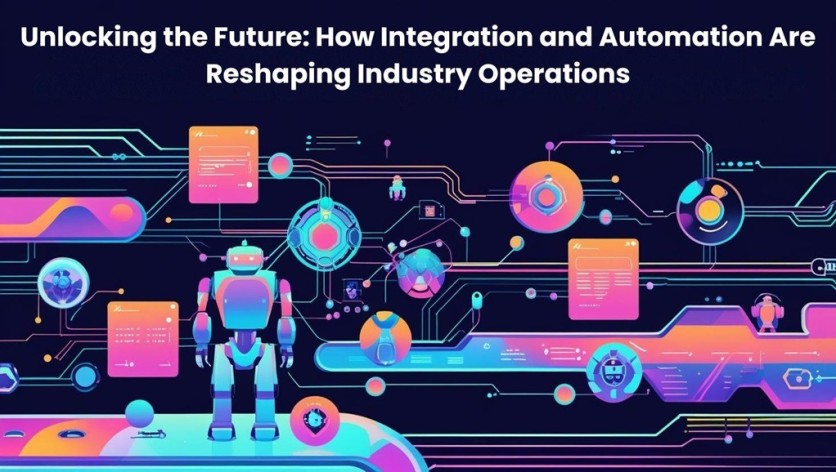
The digital transformation journey is accelerating across sectors, driven by the need for agility and innovation. At the core of this evolution lies the seamless union of integration and automation. These technologies are reshaping how organizations operate, adapt, and compete in a data-driven world. Dileep Kumar Hamsaneni Gopalaswamy, a senior solution architect, explores the evolving landscape of cloud-based integration and process automation technologies in modern enterprise settings.
Connecting the Dots: A Unified Approach to Integration
Modern industries face the persistent challenge of unifying diverse applications and data sources across cloud and on-premises environments. The emergence of cloud integration technologies has provided a robust response. These platforms facilitate seamless communication between disparate systems, enabling organizations to eliminate data silos, enhance operational visibility, and improve collaboration.
In sectors like finance, integration has allowed for real-time reconciliation between banking systems and accounting platforms, dramatically improving compliance and cash flow management. Similarly, in healthcare, it fosters the alignment of electronic health records with scheduling and billing platforms to enhance patient care coordination.
Streamlining the Engine: Automating Repetitive Workflows
While integration ensures systems communicate effectively, process automation is the engine that drives efficiency by eliminating manual tasks. By automating rule-based operations such as invoice approvals, appointment scheduling, and maintenance reporting, organizations can reduce error rates, accelerate response times, and free up staff for more strategic responsibilities.
In the energy sector, for example, automation helps manage smart meter data to ensure accurate billing, while in retail, it allows for the efficient handling of online and in-store order workflows, enhancing customer satisfaction and supply chain responsiveness.
Dual Power: Integration Meets Automation
The real innovation lies in the convergence of integration and automation. This powerful pairing enables end-to-end orchestration of complex business workflows. For instance, an integrated system might extract customer data from a CRM and financial figures from an ERP system. Automation then routes these inputs through approval workflows, creating a streamlined and intelligent decision-making pipeline.
This synergy becomes especially potent in sectors like manufacturing and telecommunications. Real-time IoT sensor data can initiate automated maintenance workflows, reducing downtime and improving equipment efficiency.
Evolving Tools: The Rise of AI and Low-Code Platforms
Recent advancements are reshaping how these tools are deployed and scaled. Artificial Intelligence AI and Machine Learning ML are being embedded into both integration and automation platforms, enabling predictive analytics, smart error handling, and adaptive optimization of workflows.
Equally transformative is the rise of low-code and no-code development environments. These tools allow business users with minimal technical expertise to build and deploy integration flows or automation scripts via drag-and-drop interfaces. This democratization of automation empowers teams to innovate more rapidly and independently.
Robotic Precision: Cloud-Based RPA and Hyperautomation
Robotic Process Automation RPA is no longer confined to basic tasks. The latest cloud native RPA solutions now integrate seamlessly with broader IT systems, offering improved scalability and lower maintenance overhead. Combined with AI, these bots can process unstructured data, make predictions, and manage exceptions.
Pushing boundaries further, hyperautomation, a concept that blends AI, RPA, process mining, and other technologies, aims to automate nearly every possible business and IT process. This holistic approach is proving particularly effective in logistics and public sector environments where efficiency and scale are paramount.
Strategic Imperatives: Planning for Integration Success
Despite the promise, successful implementation requires careful planning. Key concerns include the complexity of integrating legacy systems, limitations in RPA's ability to scale with unstructured data, and security considerations such as encryption, regulatory compliance, and the growing threat of AI-enabled cyberattacks.
Organizations are advised to adopt integration-first architectures, invest in workforce training, and utilize prebuilt connectors to reduce development effort. Hybrid integration strategies, connecting both cloud and on-premises applications, can help create a unified technology landscape.
In conclusion, Dileep Kumar Hamsaneni Gopalaswamy's work highlights the critical role of cloud integration and process automation in driving digital transformation. As legacy tools phase out, unified platforms offer a path to greater efficiency and agility. By adopting AI-powered, low-code solutions, organizations can streamline operations, improve responsiveness, and stay competitive in a fast-changing environment, ensuring long-term innovation and resilience in the evolving technological landscape.
ⓒ 2025 TECHTIMES.com All rights reserved. Do not reproduce without permission.





